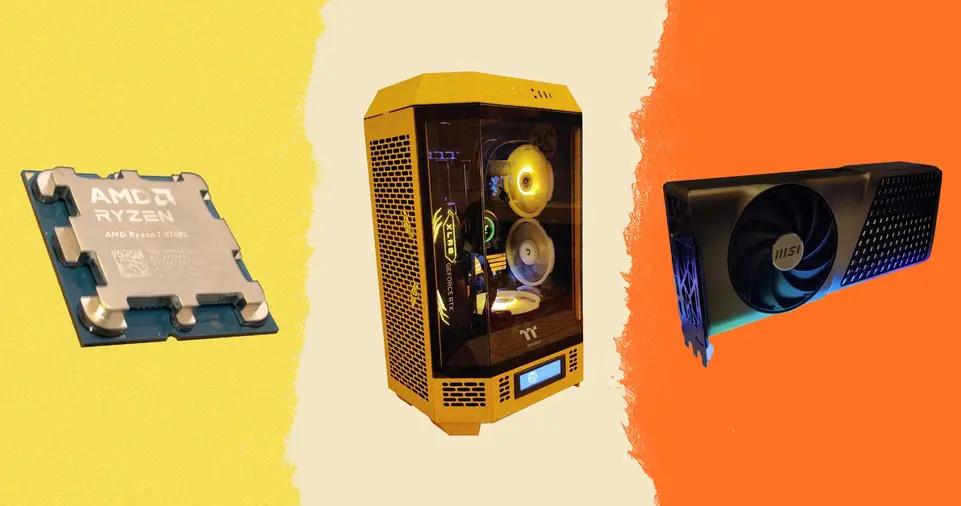Animation has become a versatile field, allowing anyone with creativity and the right tools to tell engaging stories.
Whether you want to create charming 2D animations, immersive 3D worlds, or captivating stop-motion videos, having the right equipment is crucial.
However, the idea of investing in animation tools can feel intimidating, especially for beginners. Thankfully, there are solutions for every budget.
In this guide, we’ll explore the essential tools and equipment you need to begin animating, complete with approximate budgets to help you make informed decisions.
Whether you’re a hobbyist, student, or aspiring professional, this article will guide you through building a setup that aligns with your goals and financial constraints.
Essential Equipment for Animation (With Budgets)

High-Performance Computer: The Core of Animation
Why You Need It
A reliable computer is the backbone of any animation setup, capable of running software, editing frames, and rendering animations without lags or crashes.
Specifications
- For 2D Animation:
- Processor: Intel i5/AMD Ryzen 5 or higher.
- RAM: 8GB minimum; 16GB recommended.
- Graphics Card: Basic integrated GPUs are sufficient.
- Budget: $600–$1,000.
- For 3D Animation:
- Processor: Intel i7/AMD Ryzen 7 or higher.
- RAM: 16GB minimum; 32GB recommended for smooth multitasking.
- Graphics Card: NVIDIA GTX 3060 or better.
- Storage: SSD (500GB or 1TB).
- Budget: $1,200–$3,000.
Budget Recommendations
- Entry Level:
- Acer Aspire 5: $700 – A great starter option for 2D animation.
- Lenovo Legion 5: $1,200 – Excellent for beginner 3D work.
- High-End:
- MacBook Pro (M2): $2,000 – Perfect for professionals and portability.
- Custom PC Build: $2,500 – Tailored for advanced 3D rendering.
Animation Software: Your Creative Workspace
Why You Need It
Animation software is where the magic happens. It’s essential for drawing, modeling, rigging, and rendering your animations.
Options and Costs
- 2D Animation Software:
- Adobe Animate: $20.99/month.
- Toon Boom Harmony: $25–$115/month (based on the edition).
- OpenToonz: Free (ideal for beginners).
- Krita: Free (great for hand-drawn animation).
- 3D Animation Software:
- Blender: Free (professional-grade features).
- Autodesk Maya: $225/month or $1,785/year (preferred by studios).
- Cinema 4D: $74.99/month or $999/year.
- Stop-Motion Animation:
- Dragonframe: $295 (one-time purchase).
- Stop Motion Studio: $5–$50 (based on features).
Budget Recommendations
- Beginners: Start with free tools like Blender or OpenToonz.
- Professionals: Consider Toon Boom Harmony or Autodesk Maya for advanced projects.
Graphics Tablet: Precision Drawing for Animators
Why You Need It
For 2D and digital animators, a graphics tablet is indispensable. It provides precise control over strokes and mimics traditional drawing techniques.
Options and Costs
- Entry-Level Tablets:
- Wacom One: $100–$200.
- Huion Inspiroy H610 Pro: $80–$100.
- Mid-Range Tablets:
- XP-Pen Artist 13.3: $250–$350 (comes with a display).
- Huion Kamvas Pro 16: $300–$400.
- Professional Tablets:
- Wacom Cintiq 16: $649–$800.
- iPad Pro with Apple Pencil: $1,100+.
Budget Recommendations
- Beginners: Wacom One or Huion H610 Pro for under $150.
- Professionals: Wacom Cintiq 16 for precise and comfortable drawing.
Camera and Lighting: Tools for Stop-Motion Animation
Why You Need It
Stop-motion animation relies on capturing hundreds or thousands of individual frames. A good camera and consistent lighting are essential for high-quality output.
Camera Options
- Budget DSLR: Canon EOS Rebel T7: $400–$500.
- Mid-Range Mirrorless: Sony Alpha a6400: $900–$1,200.
- High-End DSLR: Nikon D850: $3,000.
Lighting Options
- LED panels or softboxes for consistent and adjustable lighting.
- Budget: $50–$200 for entry-level kits.
Budget Recommendations
- Beginner Setup: Canon EOS Rebel T7 + LED lighting kit = $500–$700.
- Professional Setup: Sony Alpha a6400 + softbox kit = $1,200–$1,500.
External Storage: Backup and Portability
Why You Need It
Animation projects generate large files. External storage is essential for backups and freeing up space on your computer.
Options and Costs
- Entry-Level:
- Seagate Portable HDD (1TB): $50.
- WD My Passport (2TB): $70–$90.
- High-Performance:
- Samsung T7 Portable SSD (1TB): $120–$150.
- SanDisk Extreme Portable SSD (2TB): $200.
Budget Recommendations
- HDDs are affordable and good for archiving completed projects.
- SSDs offer faster read/write speeds, ideal for active project files.
Monitor: Crystal-Clear Visuals for Animation
Why You Need It
A high-resolution monitor ensures you see every detail and color accuracy in your animations.
Recommended Specifications
- Resolution: 1080p for entry-level; 4K for professionals.
- Size: 24–32 inches is ideal.
- Color Accuracy: 100% sRGB or AdobeRGB coverage.
Options and Costs
- Entry-Level:
- Dell P2419H (24-inch): $250.
- Mid-Range:
- ASUS ProArt Display (27-inch): $500–$700.
- Professional:
- LG UltraFine 5K (27-inch): $1,300.
Other Essential Tools
Audio Equipment
- Microphones for voiceovers and sound effects.
- Budget: Blue Snowball ($50) or Blue Yeti ($100–$150).
Ergonomic Workspace
- Invest in a quality desk chair and adjustable desk.
- Budget: Ergonomic chair ($150–$300); adjustable desk ($200–$500).
ALSO READ: The Role of Sound in Animation: Why Music and Sound Effects Matter
Summary Budget Breakdown
| Category | Budget Options |
|---|---|
| Computer | $600–$3,000 |
| Software | Free–$1,785/year |
| Graphics Tablet | $80–$1,100 |
| Camera & Lighting | $500–$1,500 |
| External Storage | $50–$200 |
| Monitor | $250–$1,300 |
| Additional Tools | $50–$500 |
ALSO READ: How to Choose the Right Animation Style for Your Project
Conclusion
Starting animation doesn’t have to break the bank.
From entry-level setups under $1,000 to professional-grade tools costing $5,000 or more, there’s an option for every animator.
By aligning your purchases with your current skills and goals, you can gradually build a powerful animation workstation that grows with you.

